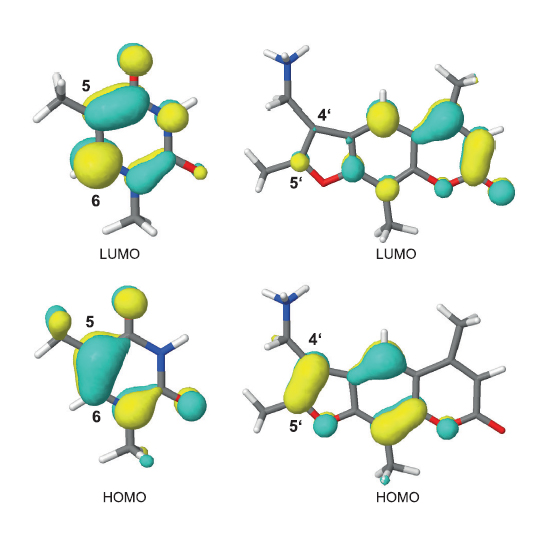The Photoaddition of a Psoralen to DNA Proceeds via the Triplet State
15-Aug-2019
J. Am. Chem. Soc. 2019, 141, 13643−13653, DOI: 10.1021/jacs.9b06521
J. Am. Chem. Soc., online article
Psoralens are natural compounds that serve in the light dependent treatment of certain skin diseases (PUVA therapy). They are DNA intercalators that upon photoexcitation form adducts with thymine bases. For one psoralen derivative, 4′-aminomethyl-4,5′,8-trimethylpsoralen (AMT), the photoreactions are characterized here by nanosecond UV–vis and IR absorption spectroscopy. The triplet state of AMT is identified as the reactive one. On the 1–10 μs time scale this local triplet state transforms into a triplet biradical bearing one single bond between the addends. Within ∼50 μs this biradical forms the final adduct featuring a cyclobutane ring. This kinetic behavior is in stark contrast to the closely related photoaddition of two thymine moieties within the DNA. Origins of the differences are discussed.











